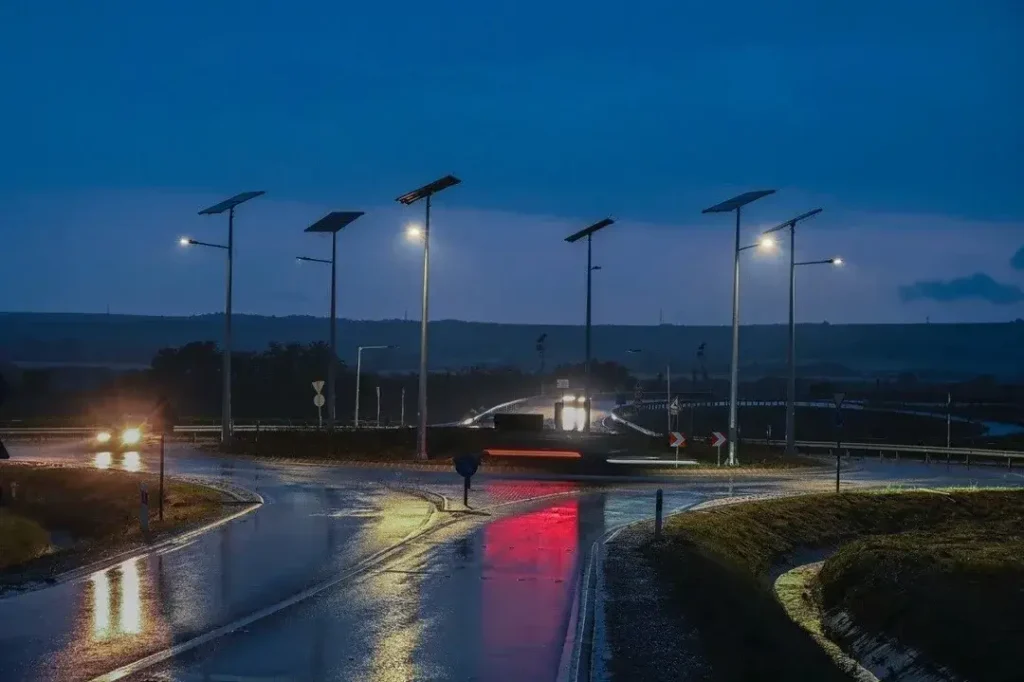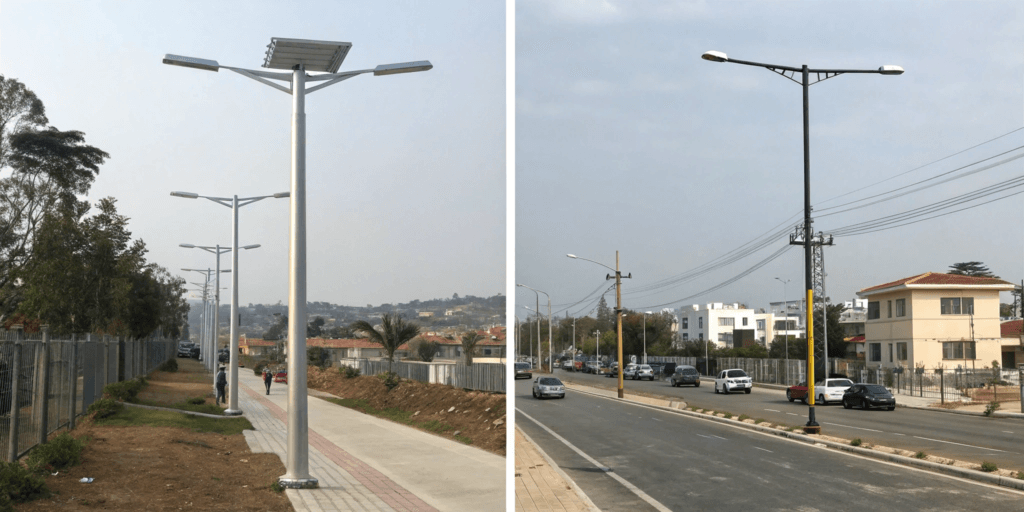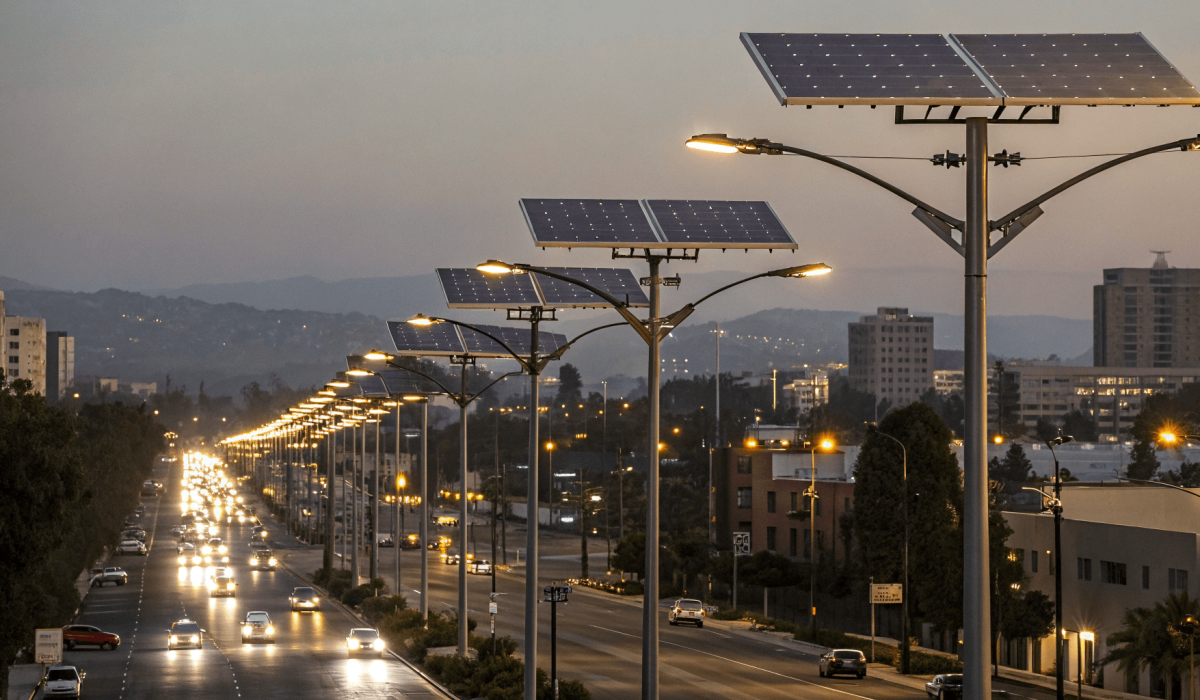A solar street light does more than illuminate roads — it enhances safety, strengthens communities, and promotes sustainability. By providing reliable, off-grid lighting, solar street lights support safer streets, boost local economies, and foster a higher quality of life, especially in regions where electricity access is limited.
In short:
Solar street lights improve community safety, reduce crime, and enhance quality of life by providing reliable, renewable-powered lighting that operates independently of the grid.
Why Street Lighting Matters for Communities
Street lighting is one of the most visible forms of public infrastructure. Well-designed lighting systems increase safety, extend community activity after sunset, and build citizen confidence in local authorities.
However, many regions still depend on outdated, grid-connected street lights — vulnerable to blackouts, high maintenance costs, and cable theft. These challenges reduce public safety and increase operational burdens for municipalities.
Solar street lights offer a sustainable, independent alternative. By using solar energy instead of grid power, they provide stable nighttime illumination without recurring energy costs, enabling governments and EPCs to meet electrification goals faster and at lower total cost of ownership (TCO).
Solar Street Lights as a Sustainable Lighting Solution

A solar street light integrates solar panels, a battery, controller, and LED lamp into a single system. During the day, solar panels collect sunlight and store energy in the battery. At night, the controller automatically powers the LEDs, ensuring continuous operation without external electricity.
For EPCs and local governments, this design means:
- Zero electricity cost — lighting powered 100% by renewable energy.
- Energy independence — no grid connection or trenching required.
- Resilience — continuous lighting even during power outages.
- Low maintenance — modern LiFePO₄ batteries last over 6,000 cycles.
By eliminating dependence on centralized infrastructure, solar lighting contributes to long-term sustainability and strengthens community resilience against grid instability.
Enhanced Safety — The Primary Social Benefit of Solar Street Lights
Fewer Traffic Accidents and Pedestrian Injuries
Reliable lighting directly improves road safety and visibility. Studies consistently show that proper street illumination can reduce nighttime accidents by up to 30–40%.
Unlike grid-connected systems, solar lights operate even during outages, ensuring consistent visibility for drivers and pedestrians. For developing regions with limited grid reliability, this is a significant safety advantage.
Crime Prevention and Public Security
Lighting is one of the simplest yet most effective tools for crime deterrence. Well-lit areas discourage vandalism, theft, and other criminal activities by increasing visibility and community surveillance.
In multiple urban and rural pilot programs, the installation of solar street lights has correlated with a noticeable drop in petty crime and nighttime disturbances. For governments and EPCs, this represents measurable social return on investment (SROI).
Improving Livability and Quality of Life
Adequate lighting transforms public spaces. Markets, schools, and community centers remain active longer, while citizens feel safer walking or socializing outdoors.

In rural and peri-urban areas, solar street lighting enables:
- Extended business hours, increasing local commerce.
- Improved mobility, especially for women and youth.
- Higher community engagement, as people gather after dark.
For EPC contractors, this means every installed light becomes a visible symbol of social progress, improving public satisfaction and supporting sustainable development goals (SDGs).
Economic Benefits of Solar Street Lights
Solar street lights deliver both social and economic returns for municipalities and EPC partners:
- Reduced operating costs: No monthly electricity bills or grid connection fees.
- Lower maintenance expenses: Durable components and long-life batteries reduce service frequency.
- Increased property value: Well-lit roads and public areas attract investment and improve community image.
- Better project ROI: Governments save on long-term OPEX, improving fiscal sustainability.
For EPCs, these advantages support stronger bids in tenders emphasizing lifecycle cost efficiency and sustainability metrics.
Real-World Impact: How Solar Street Lights Transform Communities
Across emerging markets, solar lighting projects consistently show measurable improvements in safety, economic activity, and environmental outcomes.
Observed impacts include:
- Up to 40% reduction in road accidents in illuminated zones.
- Noticeable decrease in local crime rates after installation.
- Extended hours for trade and social activity, benefiting small businesses.
- Reduced CO₂ emissions by replacing grid or diesel-powered lighting.
These results demonstrate that solar street lights are not merely a technological upgrade — they are a catalyst for community transformation and a practical tool for governments aiming to improve public welfare with limited infrastructure budgets.
A Brighter Future: Solar Street Lights as Agents of Change
As cities and rural areas invest in smart and green infrastructure, solar street lights will continue to play a central role. They integrate easily with IoT systems, motion sensors, and remote monitoring platforms, enabling proactive maintenance and data-driven management.

For EPC contractors and municipalities, adopting solar street lighting is both a technical and social investment — delivering safer environments, lower operational costs, and visible development progress that citizens can trust.
FAQs
Q: How do solar street lights benefit communities?
A: They enhance public safety, reduce crime, promote nighttime activity, and improve quality of life while lowering energy costs.
Q: Do solar street lights work during power outages?
A: Yes. They operate independently from the grid, maintaining illumination even when grid power fails.
Q: Can solar street lights support smart city initiatives?
A: Absolutely. Many systems now include IoT connectivity, remote monitoring, and adaptive lighting for efficient urban management.


